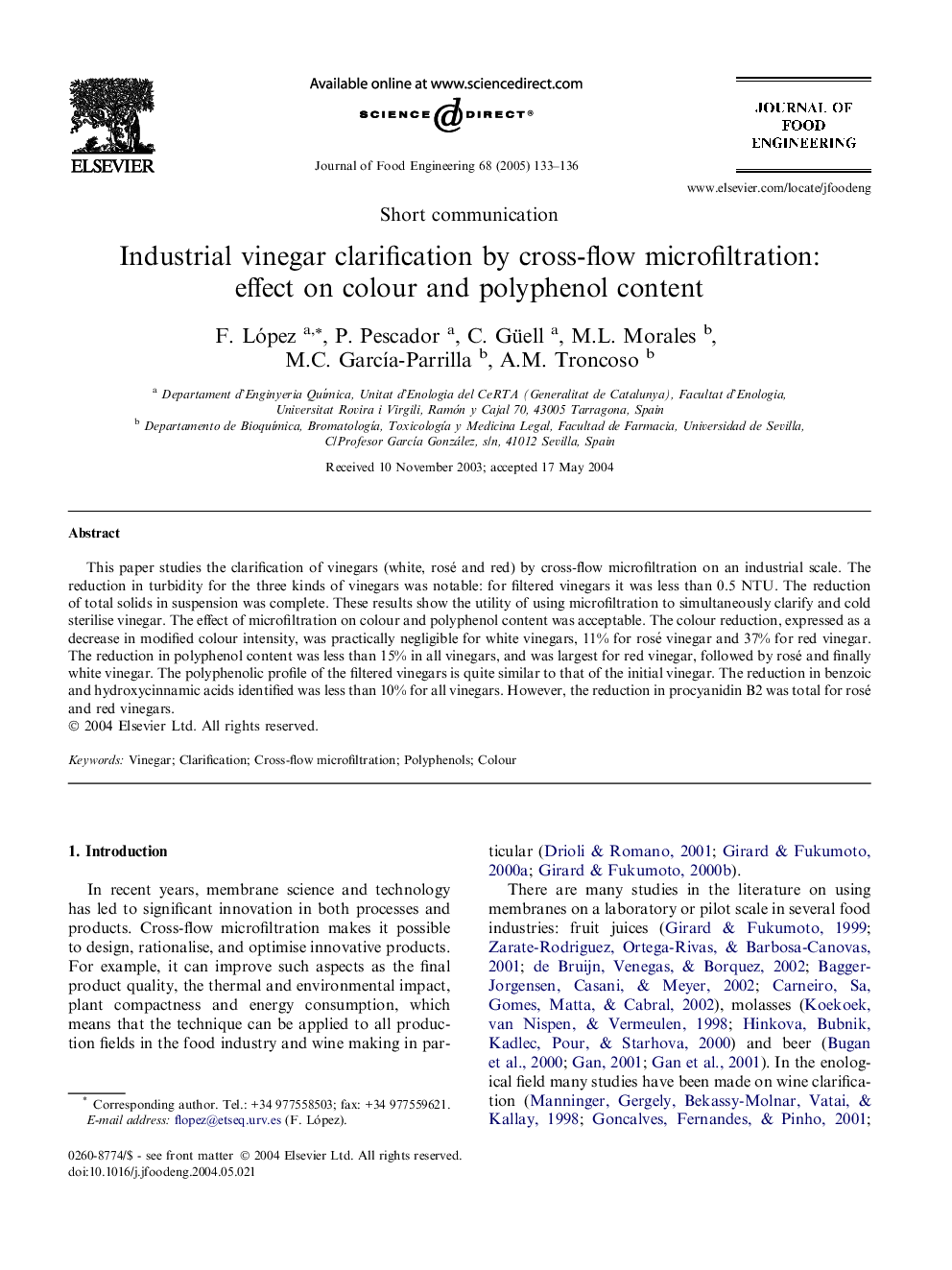| Article ID | Journal | Published Year | Pages | File Type |
|---|---|---|---|---|
| 10278178 | Journal of Food Engineering | 2005 | 4 Pages |
Abstract
This paper studies the clarification of vinegars (white, rosé and red) by cross-flow microfiltration on an industrial scale. The reduction in turbidity for the three kinds of vinegars was notable: for filtered vinegars it was less than 0.5 NTU. The reduction of total solids in suspension was complete. These results show the utility of using microfiltration to simultaneously clarify and cold sterilise vinegar. The effect of microfiltration on colour and polyphenol content was acceptable. The colour reduction, expressed as a decrease in modified colour intensity, was practically negligible for white vinegars, 11% for rosé vinegar and 37% for red vinegar. The reduction in polyphenol content was less than 15% in all vinegars, and was largest for red vinegar, followed by rosé and finally white vinegar. The polyphenolic profile of the filtered vinegars is quite similar to that of the initial vinegar. The reduction in benzoic and hydroxycinnamic acids identified was less than 10% for all vinegars. However, the reduction in procyanidin B2 was total for rosé and red vinegars.
Related Topics
Physical Sciences and Engineering
Chemical Engineering
Chemical Engineering (General)
Authors
F. López, P. Pescador, C. Güell, M.L. Morales, M.C. GarcÃa-Parrilla, A.M. Troncoso,
